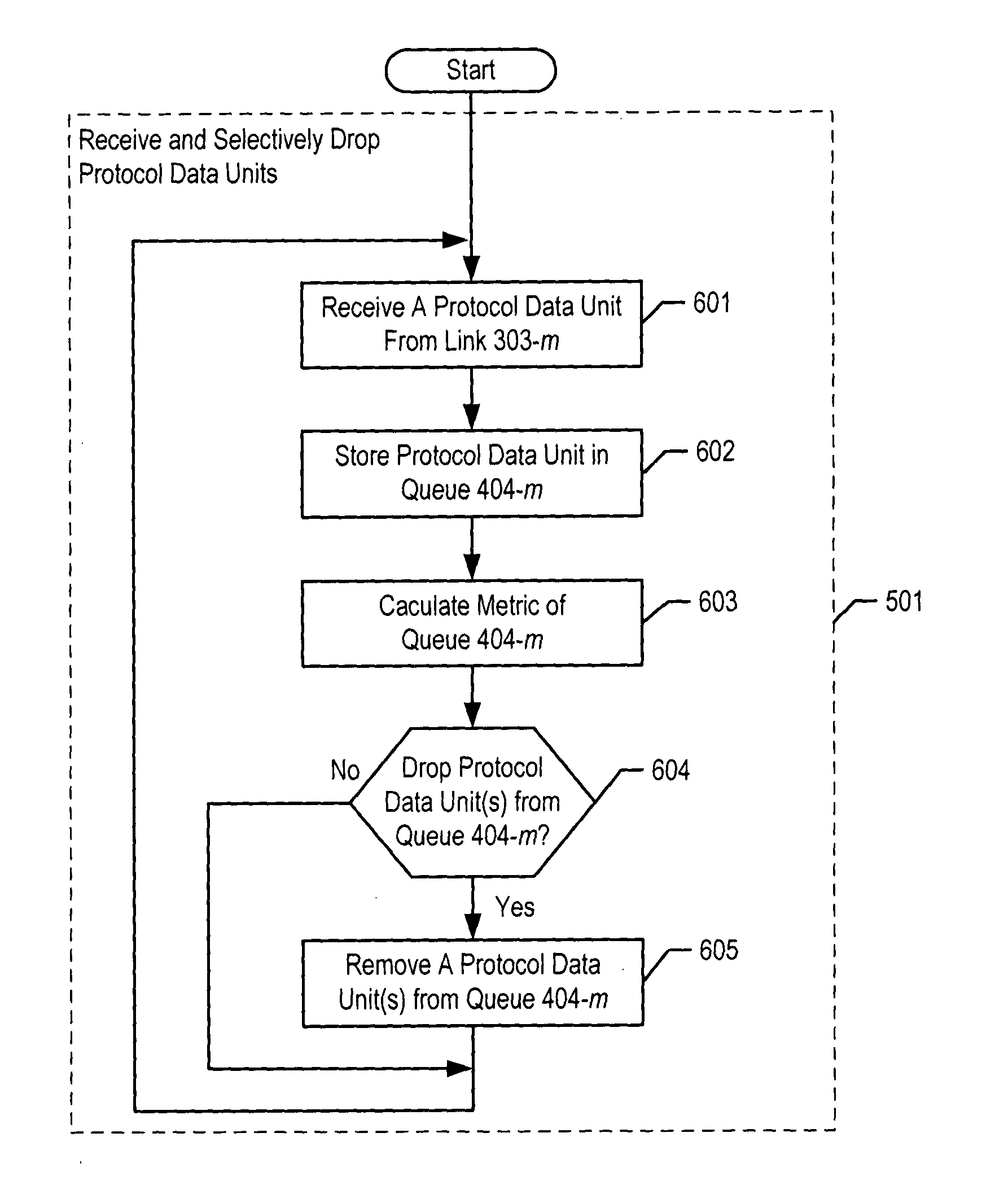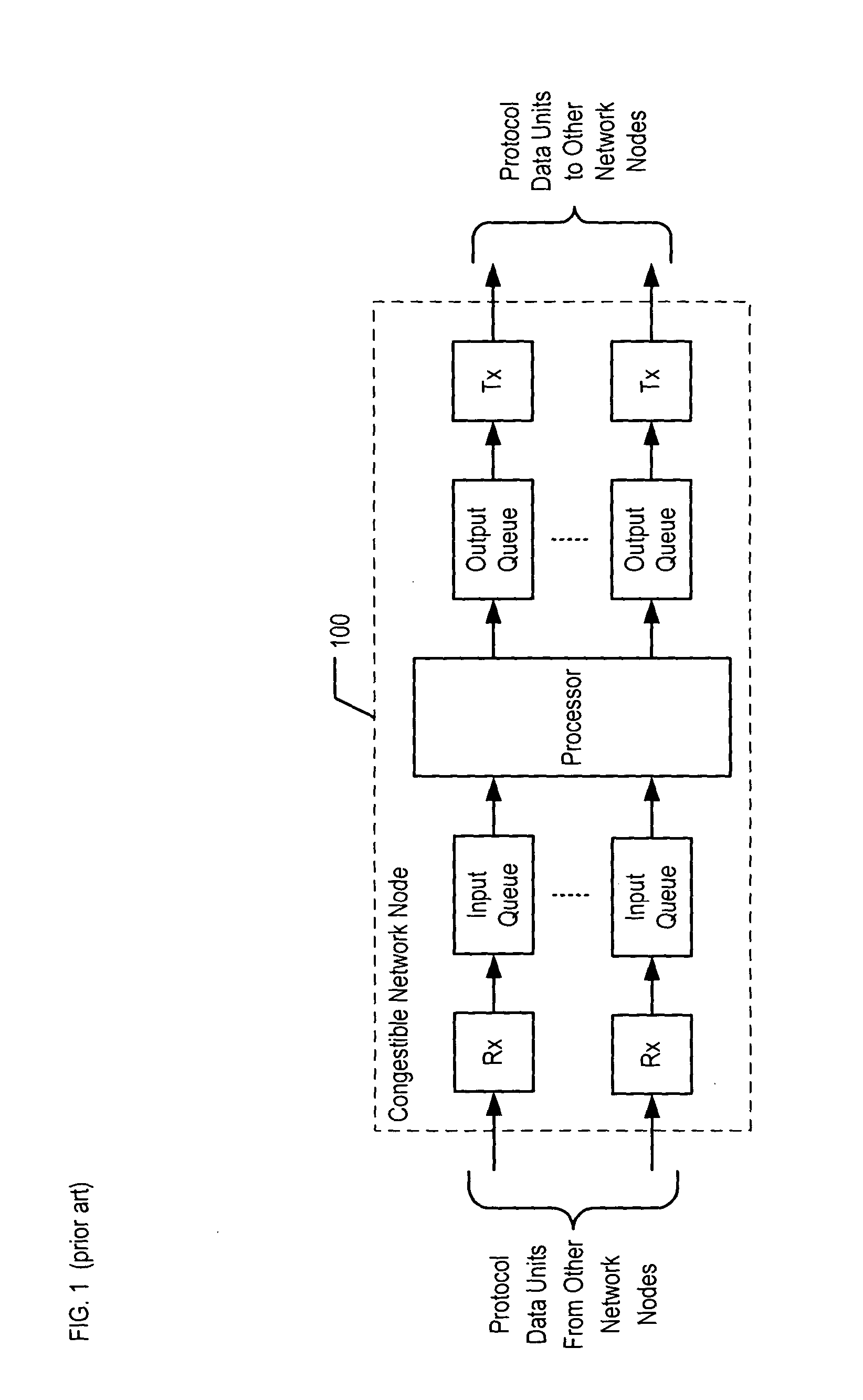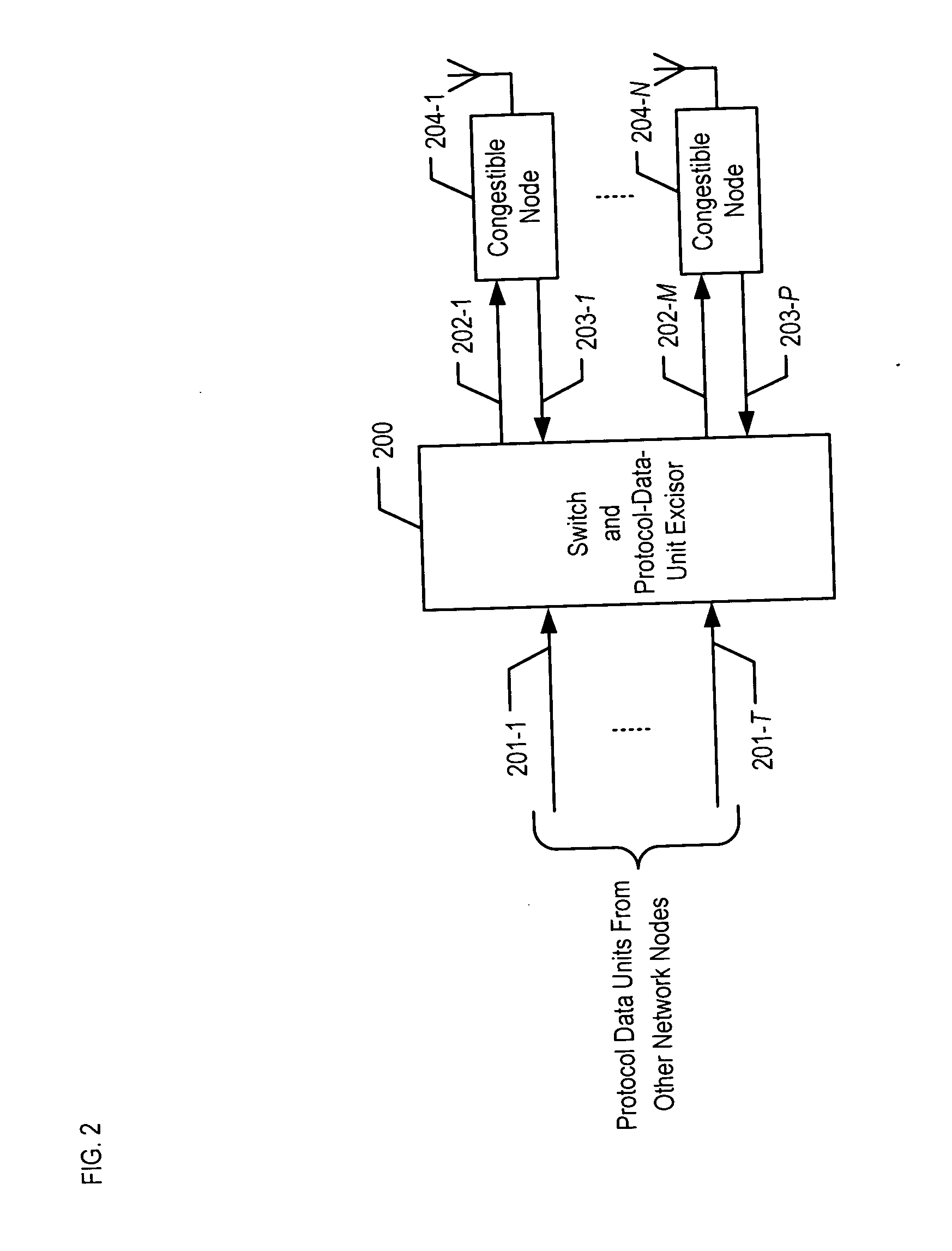Congestion management in telecommunications networks
- Summary
- Abstract
- Description
- Claims
- Application Information
AI Technical Summary
Benefits of technology
Problems solved by technology
Method used
Image
Examples
Embodiment Construction
FIG. 2 depicts a block diagram of the illustrative embodiment of the present invention, which is switch and protocol-data-unit excisor 200. Switch and protocol-data-unit excisor 200 comprises inputs 201-1 through 201-T, outputs 202-1 through 202-M, inputs 203-1 through 203-P, and congestible nodes 204-1 through 204-N, wherein M, N, P, and Tare each positive integers.
Switch and protocol-data-unit excisor 200 has two principal functions. First, it switches protocol data units from each of inputs 201-1 through 201-T to one or more of outputs 202-1 through 202-M, and second it selectively drops protocol data units to ameliorate congestion in one or more of congestible nodes 204-1 through 204-N. In other words, some protocol data units enter switch and protocol-data-unit excisor 200 but do not leave it.
In accordance with the illustrative embodiment of the present invention, both functions are performed by one mechanically-integrated node. It will be clear to those skilled in the art, ...
PUM
 Login to View More
Login to View More Abstract
Description
Claims
Application Information
 Login to View More
Login to View More - R&D
- Intellectual Property
- Life Sciences
- Materials
- Tech Scout
- Unparalleled Data Quality
- Higher Quality Content
- 60% Fewer Hallucinations
Browse by: Latest US Patents, China's latest patents, Technical Efficacy Thesaurus, Application Domain, Technology Topic, Popular Technical Reports.
© 2025 PatSnap. All rights reserved.Legal|Privacy policy|Modern Slavery Act Transparency Statement|Sitemap|About US| Contact US: help@patsnap.com



